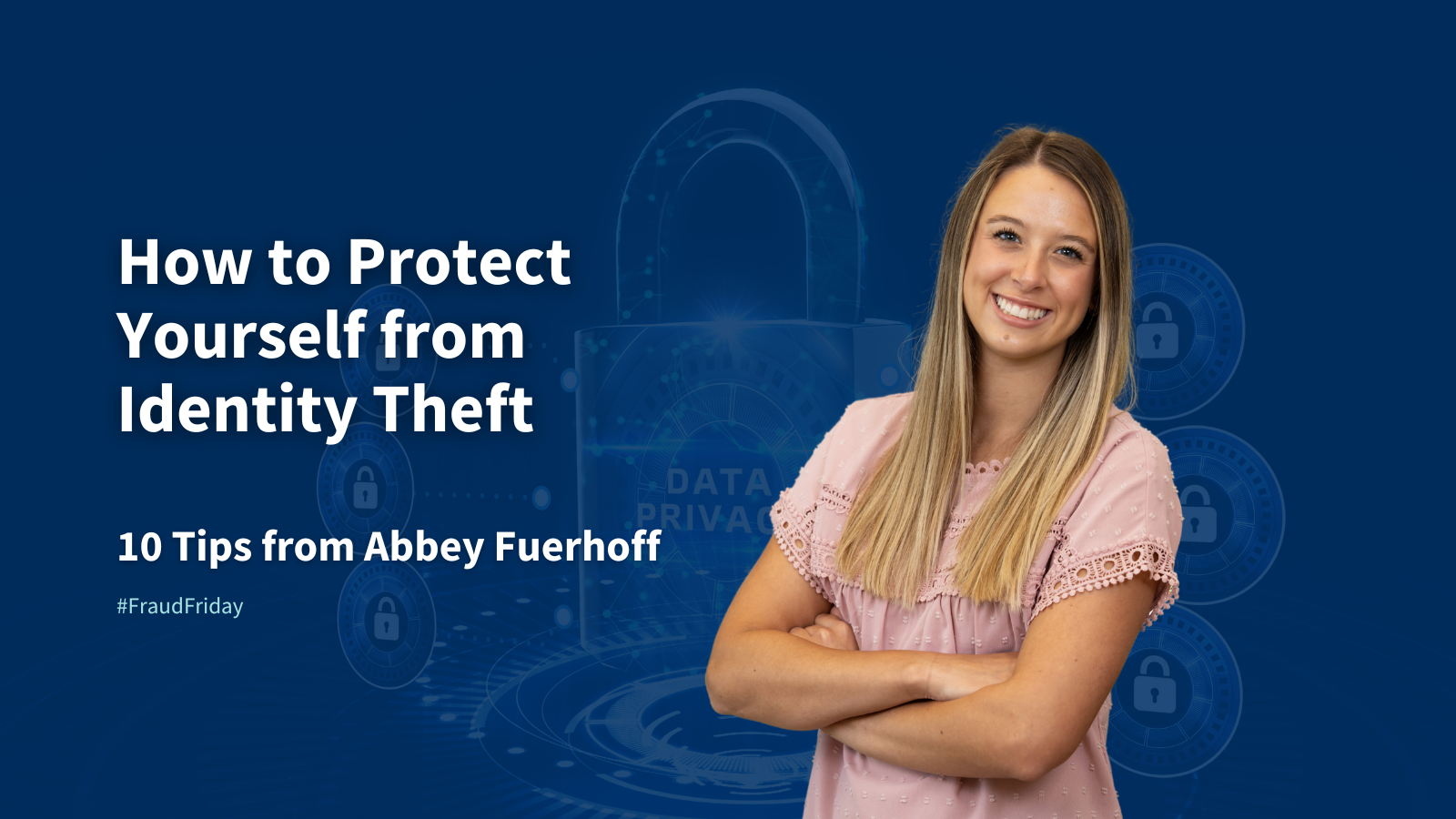By Abbey Fuerhoff | Retail Specialist | Norfolk Main Branch
In today’s digital age, protecting your identity is more crucial than ever. With cyber threats and identity theft on the rise, it’s essential to take proactive steps to protect your personal information.
Here are a few tips to protect yourself from identity theft:
1. Use Strong, Unique Passwords
Creating strong, unique passwords for your online accounts is a fundamental step in protecting your identity. Avoid using easily guessable passwords like “password123” or “admin.” Instead, use a combination of letters, numbers, and special characters. Consider using a password manager to generate and store complex passwords securely.
2. Enable Two-Factor Authentication (2FA)
Two-factor authentication adds an extra layer of security to your online accounts. By requiring a second form of verification, such as a text message code or an authentication app, even if someone obtains your password, they won’t be able to access your account without the second factor.
3. Monitor Your Financial Statements Regularly
Regularly review your bank and credit card statements for any suspicious activity. Early detection of unauthorized transactions can help you address issues before they escalate. Many financial institutions offer alerts for unusual activity—opt into these notifications for added security.
4. Be Wary of Phishing Scams
Phishing scams are attempts to trick you into giving away personal information. These scams often come in the form of emails or text messages that appear to be from legitimate sources. Be cautious of any unsolicited communications asking for personal information and verify the sender before clicking on any links or providing information.
5. Secure Your Devices
Ensure your devices are protected with up-to-date security software. Use antivirus programs and firewalls to defend against malware and viruses. Additionally, keep your operating system and applications updated to protect against the latest security vulnerabilities.
“At Midwest Bank, protecting our clients from identity theft is our top priority. We employ the latest security measures and technology to ensure the safety of our customers’ personal information, providing peace of mind and a secure banking experience.”
6. Shred Sensitive Documents
Physical documents containing personal information, such as bank statements, tax forms, and medical records, should be shredded before disposal. Identity thieves can rummage through trash to find valuable information, so shredding these documents is a simple yet effective way to protect yourself.
7. Limit Sharing Personal Information Online
Be mindful of the information you share on social media and other online platforms. Avoid posting sensitive details such as your full birthdate, address, or phone number. Cybercriminals can use this information to impersonate you or answer security questions to gain access to your accounts.
9. Check Your Credit Report Regularly
Regularly reviewing your credit report can help you spot signs of identity theft early. In the U.S., you’re entitled to a free credit report annually from each of the three major credit bureaus (Experian, TransUnion, and Equifax). Look for any unfamiliar accounts or inquiries and report them immediately.
10. Educate Yourself About Identity Theft
Stay informed about the latest identity theft techniques and scams. Understanding how identity theft occurs can help you recognize and avoid potential threats. Midwest Bank has web pages and blogs dedicated to safety and security.
Protecting your identity requires vigilance and proactive measures. By implementing these tips, you can significantly reduce the risk of identity theft and keep your personal information safe.

